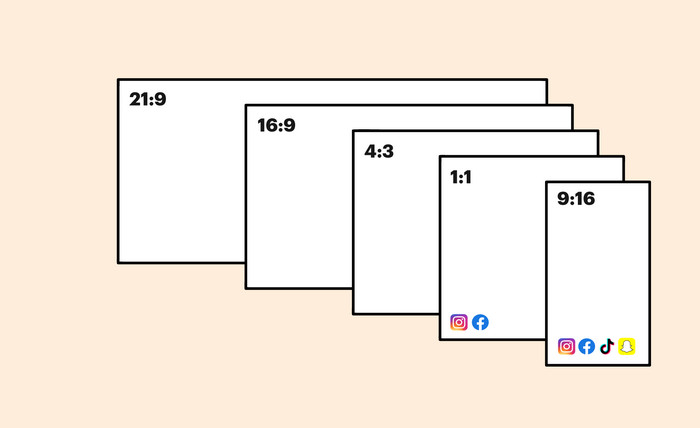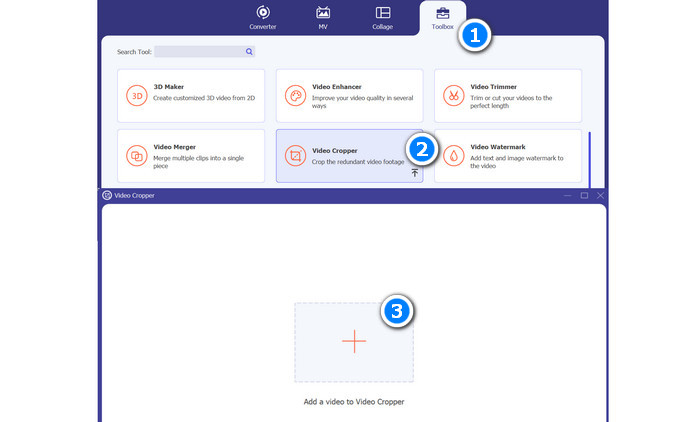Mastering Aspect Ratio: The Key to Stunning Visuals Seamless Display
Have you ever wondered why some images or videos look stretched or squashed when viewed on different devices or screens? Well, the culprit behind this visual distortion is the aspect ratio. Simply put, the aspect ratio is the symmetrical association between the width and height of an image or video. It determines the shape and size of the viewing area and can affect the overall visual experience.
Understanding aspect ratio is crucial for content creators, as it can help ensure their work is properly displayed on various devices and platforms without compromising its intended composition. So, whether you're a photographer, videographer, or simply a curious learner, delving into the world of aspect ratio can certainly enhance your understanding and appreciation of visual media.

Part 1. What is Video Aspect Ratio
The aspect ratio of a picture is the width-to-height ratio. It always appears as two integers separated by a colon, as 4:3, 16:9, 3:2, etc., and represents the ratio of the video's aspect ratio. Many people today want to dabble in video production themselves, which leads to widely varying levels of the end product. This means that the videos won't play properly in any other viewer or on any video-sharing website. The visual quality could be improved if the video is stretched or distorted because it does not fit the player's dimensions.
Part 2. Common Video Aspect Ratios
The aspect ratio pertains to the proportional relationship between the width and height of the video frame. The most common aspect ratios are 4:3, 16:9, and 1:1.
1080 × 1920 Aspect Ratio
1080 × 1920 is a common aspect ratio that you might come across, particularly in the realm of mobile devices. This aspect ratio is also known as vertical or portrait orientation and has a 9:16 aspect ratio proportional relationship between width and height. It's commonly used for social media platforms like TikTok and Instagram, as well as for mobile videos and ads. Therefore, it could also work as an Instagram aspect ratio changer. The 1080 × 1920 aspect ratio is well-suited for vertical content that can be viewed comfortably on a mobile screen without requiring the viewer to rotate their device.

16:9 Aspect Ratio
16:9 is a commonly used aspect ratio that you've likely encountered in many video and TV displays. It's also known as widescreen, as it's wider than it is tall. This aspect ratio has a proportional relationship between width and height of 16:9, which makes it ideal for viewing on modern devices such as HDTVs, laptops, and desktop monitors. It's commonly used in the film industry, streaming services, and video-sharing platforms like YouTube, as it provides a cinematic viewing experience that's immersive and engaging.
4:3 Aspect Ratio
The 4:3 aspect ratio is an older and more traditional aspect ratio that you might come across in certain displays or videos. This aspect ratio has a proportional relationship between width and height of 4:3, which makes it more square-shaped compared to the wider 16:9 aspect ratio. The 4:3 aspect ratio can still be found in certain contexts, such as in old movies or retro video games, and can evoke a sense of nostalgia or vintage appeal.

Part 3. Video Aspect Ratios of Popular Platforms
The aspect ratio is a crucial factor to consider when creating content for popular platforms like social media, streaming services, and video-sharing sites. Each platform has its own specifications and requirements for aspect ratio, and failing to adhere to them can result in poorly displayed or distorted content.
Instagram Aspect Ratio
The preferred aspect ratio for Instagram is 1:1, also known as the square aspect ratio. This means that the Instagram video dimensions should be equal, creating a square shape. However, Instagram also supports other aspect ratios, such as 4:5, 16:9, and 9:16 for vertical videos. Still, the best aspect ratio for Instagram is 1:1.
TikTok Aspect Ratio
TikTok is a popular video-sharing app that has its own preferred aspect ratio for videos. The recommended aspect ratio for TikTok videos is 9:16, which is also known as the vertical or portrait aspect ratio. This means that TikTok video dimensions are taller than they are wide and are designed to be viewed on a mobile device without the need for rotation. The vertical format of TikTok videos makes them perfect for capturing close-up shots or showcasing individual subjects and also allows for easy one-handed scrolling through a feed.
Facebook Aspect Ratio
Facebook supports a variety of aspect ratios for both photos and videos. For photos, the recommended aspect ratio is 4:5, which is taller than it is wide. This Facebook video dimension works well for portrait-oriented images and provides a good balance between a large enough image size and easy visibility in the news feed. For aspect ratio films, Facebook supports multiple aspect ratios, including 16:9, 9:16, and 1:1. The 16:9 aspect ratio is ideal for widescreen videos, while the 9:16 aspect ratio is best for vertical or portrait-oriented videos. The 1:1 aspect ratio, which creates a square image, is also commonly used for videos on Facebook.
Twitter Aspect Ratio
Twitter also supports a variety of aspect ratios for both photos and videos. For photos, the recommended aspect ratio is 2:1 or 1200 × 600 pixels. This aspect ratio provides a wide and panoramic view that works well for landscape-oriented images. For videos, Twitter supports several aspect ratios, including 16:9, 1:1, and 9:16. The 16:9 aspect ratio is ideal for widescreen Twitter video dimensions, while the 1:1 aspect ratio is commonly used for square videos. The 9:16 aspect ratio is best for vertical or portrait-oriented videos.
Part 4. How to Change Aspect Ratio
Using FVC Video Converter Ultimate, you may quickly and effortlessly adjust the video's aspect ratio or dimensions without losing image or sound quality. This program makes it simple to adjust the width and height of your films to fit your needs. FVC Video Converter Ultimate's intuitive interface makes it easy to modify the video's aspect ratio for a certain platform or to customize the video's measurements to meet your project. It's a go-to for anyone looking for a dependable and effective video editing solution because of its intuitive UI and extensive feature set.
Step 1. Acquire the software
Downloading and installing FVC Video Converter Ultimate is the first step in cropping your videos. To get started, select your operating system from the list and then click the Free Download button.
Free DownloadFor Windows 7 or laterSecure Download
Free DownloadFor MacOS 10.7 or laterSecure Download
Step 2. Import a video
After the software has been installed, launch it, and select the Toolbox menu option. If you want to crop a video or change its aspect ratio, you can do it by choosing the Video Cropper option. To add a video for cropping, click the plus sign button in the upload field.

Step 3. Change the aspect ratio
The next step is to pick the video's aspect ratio. There is a ratio selector menu just below the video player, where you can choose the aspect ratio you like. To change the proportions of your movie, just drag the box's corners.

Step 4. Get the edited video
In order to export your edited video file, click the Export button in the toolbar's lower right corner once you're satisfied with your crop. It's an exceptional way to show off your video editing abilities to your friends and family, so be sure to publish it on social media.

Further Reading
What Is Video Resolution: In-Depth Insight of Resolution & More
MKV vs MP4 – Comparison between MKV and MP4
Part 5. FAQs about Video Aspect Ratios
How are video dimensions typically expressed?
Where are portrait video dimensions commonly used?
Portrait video dimensions are commonly used on social media platforms such as Instagram, Snapchat, TikTok, and Facebook, where vertical videos are more suitable for mobile viewing.
Where are vertical video dimensions commonly used?
Vertical aspect ratios are commonly used on social media platforms like Instagram, TikTok, Snapchat, and Facebook, where vertical videos and images are more suitable for mobile viewing.
Conclusion
Video aspect ratio is an important consideration when creating videos, as it determines the size and proportion of the video frame. The most common aspect ratios for videos include 16:9 for landscape orientation and 9:16 or 4:5 for portrait orientation. Choosing the appropriate aspect ratio for your video depends on the intended use and platform on which it will be viewed.



 Video Converter Ultimate
Video Converter Ultimate Screen Recorder
Screen Recorder



